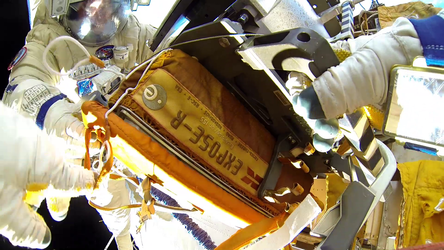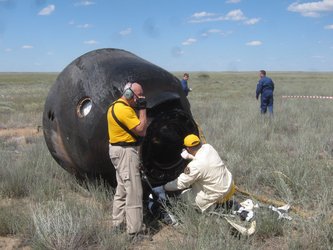Accept all cookies Accept only essential cookies See our Cookie Notice

About ESA
The European Space Agency (ESA) is Europe’s gateway to space. Its mission is to shape the development of Europe’s space capability and ensure that investment in space continues to deliver benefits to the citizens of Europe and the world.
Highlights
ESA - United space in Europe
This is ESA ESA facts Member States & Cooperating States Funding Director General Top management For Member State Delegations European vision European Space Policy ESA & EU Space Councils Responsibility & Sustainability Annual Report Calendar of meetings Corporate newsEstablishments & sites
ESA Headquarters ESA ESTEC ESA ESOC ESA ESRIN ESA EAC ESA ESAC Europe's Spaceport ESA ESEC ESA ECSAT Brussels Office Washington OfficeWorking with ESA
Business with ESA ESA Commercialisation Gateway Law at ESA Careers Cyber resilience at ESA IT at ESA Newsroom Partnerships Merchandising Licence Education Open Space Innovation Platform Integrity and Reporting Administrative Tribunal Health and SafetyMore about ESA
History ESA Historical Archives Exhibitions Publications Art & Culture ESA Merchandise Kids Diversity ESA Brand Centre ESA ChampionsLatest
Space in Member States
Find out more about space activities in our 23 Member States, and understand how ESA works together with their national agencies, institutions and organisations.
Science & Exploration
Exploring our Solar System and unlocking the secrets of the Universe
Go to topicAstronauts
Missions
Juice Euclid Webb Solar Orbiter BepiColombo Gaia ExoMars Cheops Exoplanet missions More missionsActivities
International Space Station Orion service module Gateway Concordia Caves & Pangaea BenefitsLatest
Space Safety
Protecting life and infrastructure on Earth and in orbit
Go to topicAsteroids
Asteroids and Planetary Defence Asteroid danger explained Flyeye telescope: asteroid detection Hera mission: asteroid deflection Near-Earth Object Coordination CentreSpace junk
About space debris Space debris by the numbers Space Environment Report In space refuelling, refurbishing and removingSafety from space
Clean Space ecodesign Zero Debris Technologies Space for Earth Supporting Sustainable DevelopmentLatest
Applications
Using space to benefit citizens and meet future challenges on Earth
Go to topicObserving the Earth
Observing the Earth Future EO Copernicus Meteorology Space for our climate Satellite missionsCommercialisation
ESA Commercialisation Gateway Open Space Innovation Platform Business Incubation ESA Space SolutionsLatest
Enabling & Support
Making space accessible and developing the technologies for the future
Go to topicBuilding missions
Space Engineering and Technology Test centre Laboratories Concurrent Design Facility Preparing for the future Shaping the Future Discovery and Preparation Advanced Concepts TeamSpace transportation
Space Transportation Ariane Vega Space Rider Future space transportation Boost! Europe's Spaceport Launches from Europe's Spaceport from 2012Latest

In a materials world
Thank you for liking
You have already liked this page, you can only like it once!
Nothing is entirely immune to the harsh environment of space. Out there, materials and organisms degrade at a faster pace and in different ways. To understand how materials age beyond Earth’s atmosphere, up to 141 samples are spending a minimum of six months exposed to outer space for the Euro Material Ageing experiment.
Radiation, vacuum, temperature extremes and even space debris are a threat to the materials placed on Bartolomeo, Europe’s ‘front porch’ on the International Space Station.
No filters or protection allowed, each sample has a bare surface of 20 millimetres cramped between two aluminium plates. The diverse palette in this image shows novel metallic glasses, ceramic composites, silicon, diamond-like carbon, carbon fibres and plastics, among others.
Europe has years of experience in sending biology samples to space. This time, ESA and the French space agency CNES are exposing organic and inorganic materials outside the Space Station. ESA tested 45 samples, collected from 15 different research institutes throughout Europe, in their laboratories before launch.
NASA astronauts Sunita Williams and Nick Hague used the Station’s 17-metre-long robotic arm last December to place the Nanoracks airlock on Bartolomeo, where the experiment is facing the full spectrum of space environment hazards.
As Nick Hague said in a social media post, “Materials research is critical to our exploration of space. Vacuum, extreme hot and cold, radiation – these are the harsh realities of the space environment. The right materials can help us survive in space and dare to go further, and can also improve life on Earth!”
The Space Station experiences frequent changes from sunlight to darkness while circling our planet. Materials go through drastic temperature shifts from up to 150°C in sunlight down to –150°C in the shade. Such thermal stresses lead to accelerated ageing, potential cracking and misalignment.
Samples are exposed to highly reactive atomic oxygen formed at the topmost fringes of the atmosphere and known to eat away satellite surfaces. Materials in this experiment will also cope with ‘outgassing’ in vacuum – the gradual boiling away of chemicals and solvents that could contaminate sensitive satellite surfaces such as lenses.
Euro Material Ageing is testing how exposure to space can be bad for the health of spacecraft components. Whether a mission is orbiting Earth or operates in deep space, unwanted effects such as discoloration, embrittlement and buckling can lead to premature failures.
Results from the experiment could inform the design of fire-retardant and rust-resistant materials, and better protection for satellites could in turn help improve plastic siding for your house.
The exposure time is planned between six and 18 months. After completion, the facility will be transferred back inside the International Space Station. A new set of samples will be waiting for a second immersion into the harshness of space.
-
CREDIT
ESA/NASA -
LICENCE
ESA Standard Licence

Expose-R2 samples back on Earth

Expose-R2 samples

Exposed: scenes from a spacewalk

Retrieving Expose-R2















 Germany
Germany
 Austria
Austria
 Belgium
Belgium
 Denmark
Denmark
 Spain
Spain
 Estonia
Estonia
 Finland
Finland
 France
France
 Greece
Greece
 Hungary
Hungary
 Ireland
Ireland
 Italy
Italy
 Luxembourg
Luxembourg
 Norway
Norway
 The Netherlands
The Netherlands
 Poland
Poland
 Portugal
Portugal
 Czechia
Czechia
 Romania
Romania
 United Kingdom
United Kingdom
 Slovenia
Slovenia
 Sweden
Sweden
 Switzerland
Switzerland

























